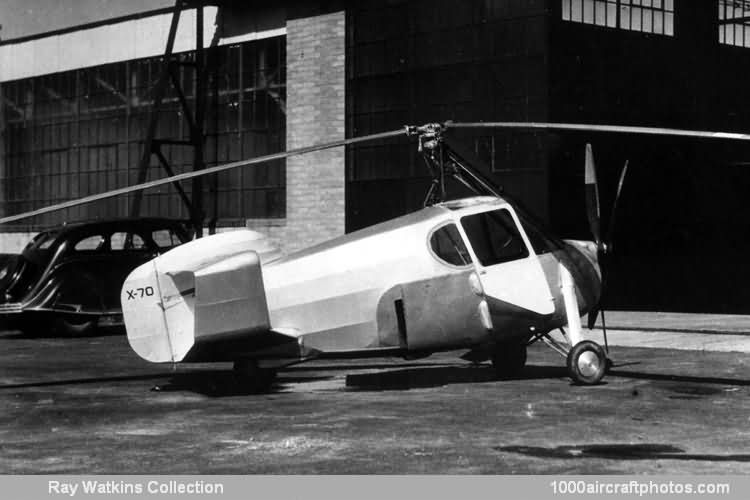04/30/2009. Remarks by Ray Watkins: "Harold Pitcairn established two companies in 1924: the Pitcairn Aircraft Co., for construction of aircraft and research into rotorcraft, and Pitcairn Aviation for flight operations. A third company, Pitcairn Aeronautics, was created in 1926 and took over the rotary wing research program. Pitcairn obtained a license for Cierva autogyro patents from Cierva (UK) in 1929, with an agreement to cross-license Pitcarn rotary wing patents with Cierva (UK). Pitcairn Aeronautics was then renamed Pitcairn-Cierva Autogiro Co. of America and in 1933 became the Autogiro Co. of America.
The Experimental Development Section of the US Bureau of Commerce sponsored a competition for a convertible aircraft/highway vehicle in 1936. Autogiro were awarded a contract for a 'roadable autogyro', the model AC-35, which was a development of the Pitcairn PA-22.
The AC-35 was a two-seat autogyro powered by a 90 hp Pobjoy Cascade engine mounted behind the cabin with a selector gearbox which could direct power to the tractor propellers or to the rear landing gear wheel for operation on roads. For road movement the rotor blades were folded back and steering was achieved using the rudder pedals to control the front two castoring wheels. The aircraft was fitted with a pair of contra-rotating two-blade propellers and a rear control surface group with (effectively) two tail planes and three vertical stabilizers.
After extensive testing with twelve different propeller configurations the contra-props were deleted due to noise and replaced by a single two-blade propeller. Poor longitudinal stability with the original rear control surfaces also led to changes which retained the central fin but installed a single longer span tail plane with canted endplates, similar to that used on the eighth version of the PA-22.
On October 2, 1936 the prototype was flown to Washington by chief pilot James Ray, and two weeks later with the rotor blades folded it was driven down Pennsylvania Ave to the Bureau of Commerce building and handed over to Secretary Roper.
Seven different designs were submitted for the competition which was won by the AC-35. It proved to have very pleasant flying characteristics and good on-road performance, but no production took place. Design rights for the aircraft were acquired by the Skyway Engineering Co, Inc in September 1961 when Skyway became a patent licensee of Autogiro.
Pictured above in its original configuration, the aircraft is now preserved at NASM's Steven F. Udvar-Hazy Center."
